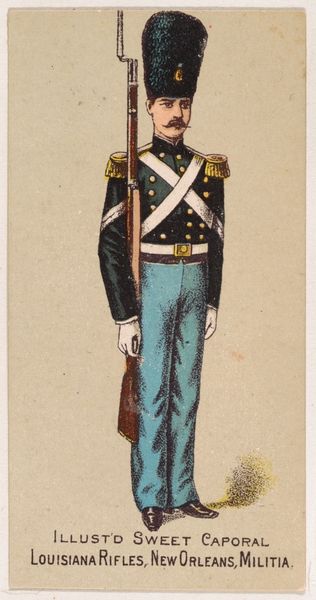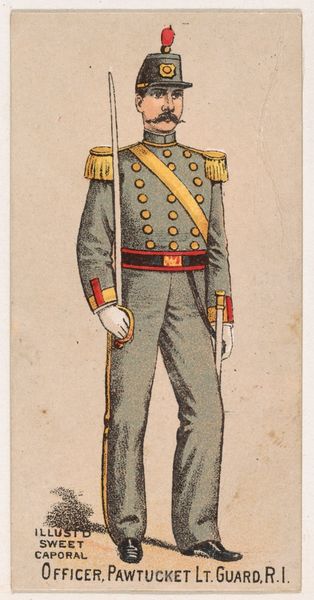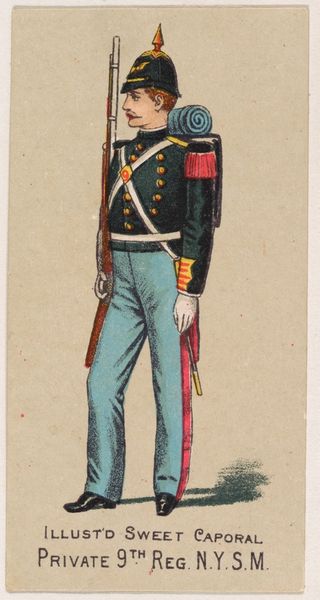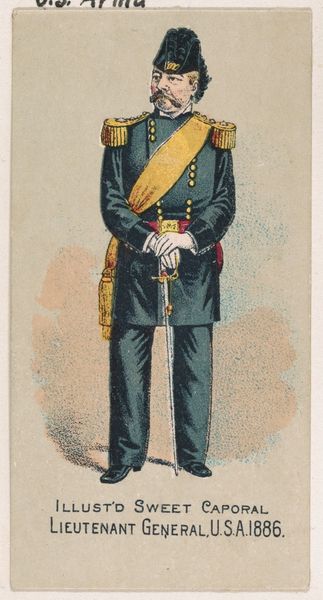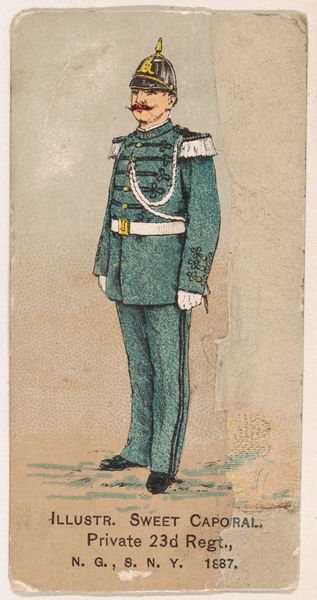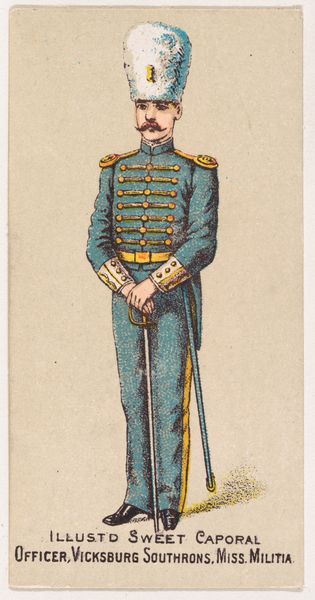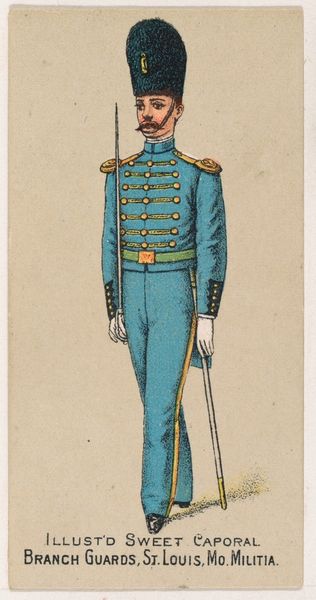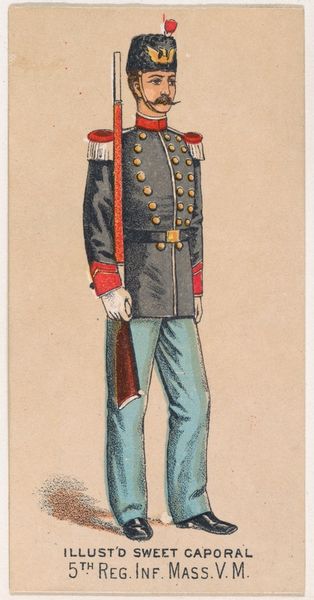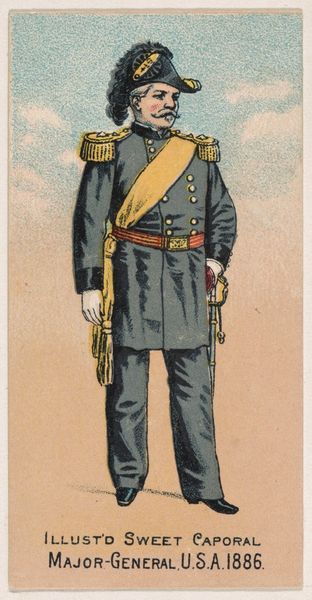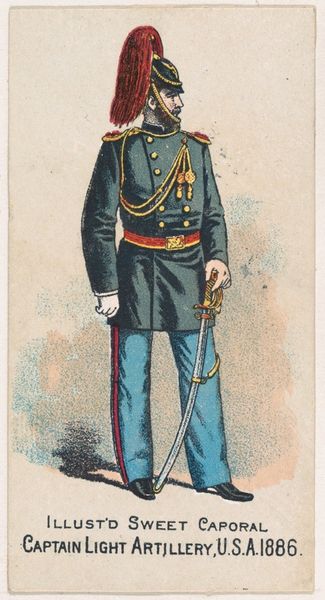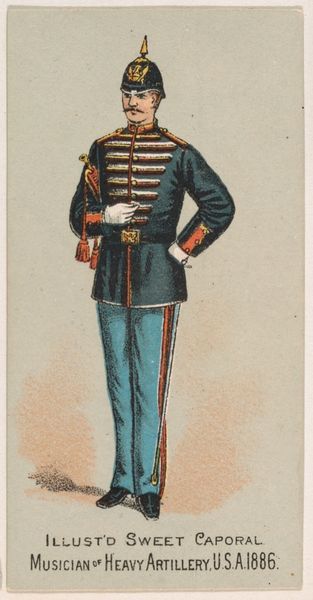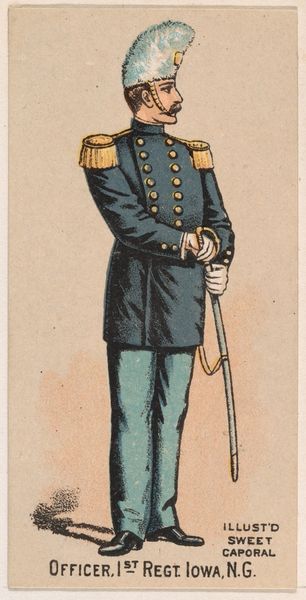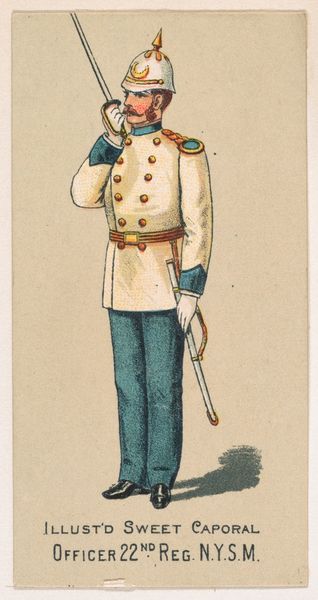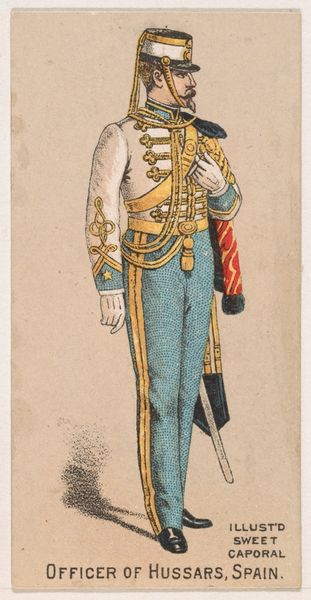
Lomax Rifles, 1st Regiment, Mobile, Alabama Militia, from the Military Series (N224) issued by Kinney Tobacco Company to promote Sweet Caporal Cigarettes 1888
0:00
0:00
drawing, print
#
drawing
#
imaginative character sketch
#
childish illustration
# print
#
traditional media
#
caricature
#
personal sketchbook
#
men
#
sketchbook drawing
#
watercolour illustration
#
cartoon carciture
#
sketchbook art
#
watercolor
Dimensions: Sheet: 2 3/4 × 1 1/2 in. (7 × 3.8 cm)
Copyright: Public Domain
Curator: Here we have "Lomax Rifles, 1st Regiment, Mobile, Alabama Militia." This print from 1888 comes from a series of collectible cards issued by the Kinney Tobacco Company to promote their "Sweet Caporal" cigarettes. It's part of the Military Series. Editor: He looks so rigidly posed, almost doll-like. The colors, particularly that pale blue uniform, give him an unexpectedly delicate appearance, though the rifle and feathered hat certainly aim for authority. Curator: These cards served a dual purpose: advertising and documentation of various military units. They tapped into a surge of patriotic sentiment in the late 19th century while simultaneously creating brand awareness. The Sweet Caporal brand wanted to signal respectability, associating itself with community symbols like the local militia. Editor: Absolutely. I'm drawn to the uniform itself. The elaborate details - the gold epaulettes, the crossbelts, and the absurdly tall plume—speak to a deep human impulse to adorn oneself, even within the structure of a military uniform. What narratives were they hoping to construct with such symbolism? Curator: It is also worth noting how these cards offered a window into regional identities. The Lomax Rifles represented a specific community in Mobile, Alabama. Collecting these cards allowed individuals to piece together a portrait of the nation's military landscape and local power. The cards fostered awareness but did shape an imagined reality and were definitely part of Reconstruction's complicated social imagery. Editor: And the very act of collecting and trading these cards, I imagine, gave people a sense of ownership over these symbols and this history. Though filtered, commodified patriotism of a particular era. What meanings did such images offer? Safety? Connection? What of the power structure represented here. Curator: Right, these small images spoke volumes about the society that produced and consumed them. These images told citizens of the value of community but were tied inextricably to commerce. A way to show social belonging, accessible through the purchase of cigarettes. It also represents the cultural complexity inherent during the Reconstruction Era, representing the social need to rebuild and reconcile. Editor: So much is packed into this little image—it becomes more poignant the more we dissect its layers. Curator: Indeed, a simple advertisement unfolds into a commentary on identity, power, and collective memory.
Comments
No comments
Be the first to comment and join the conversation on the ultimate creative platform.
